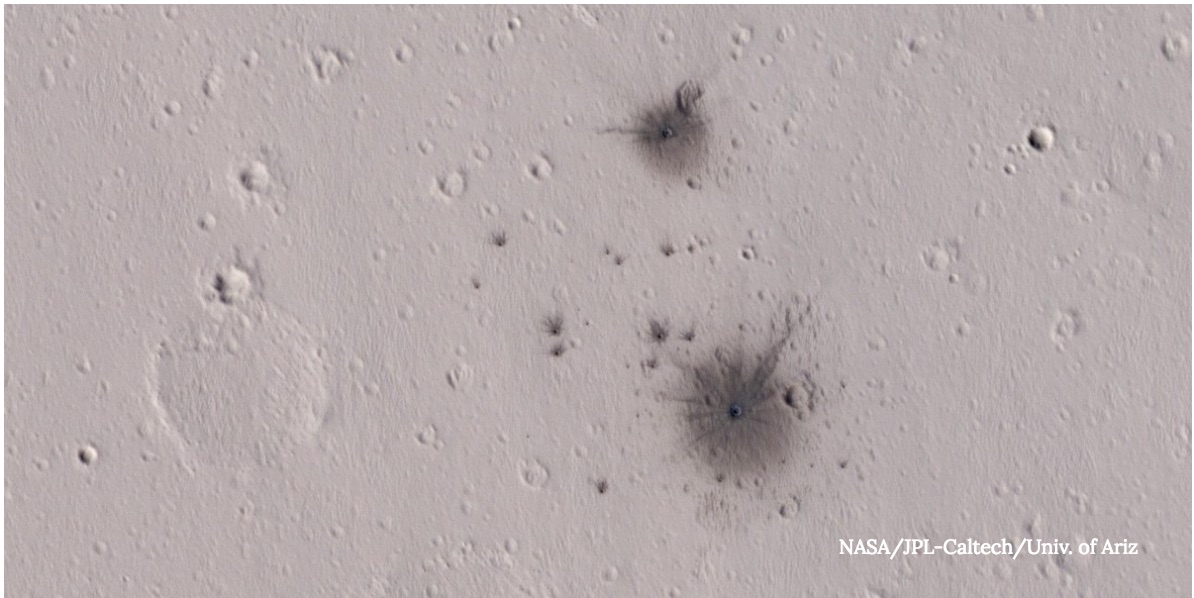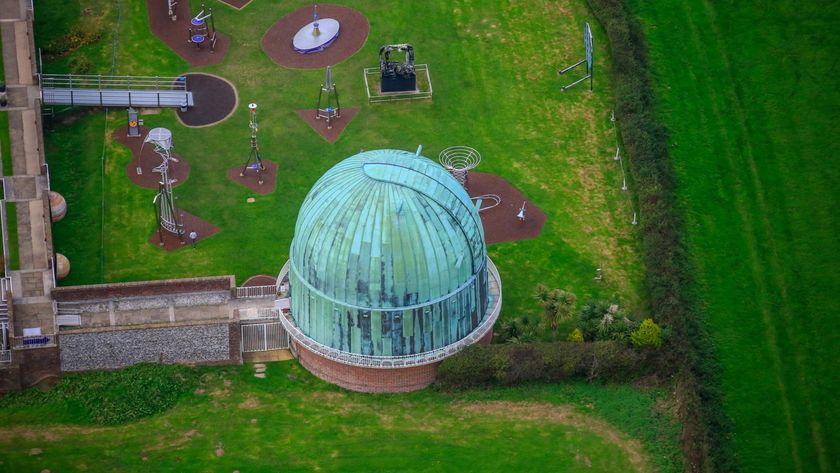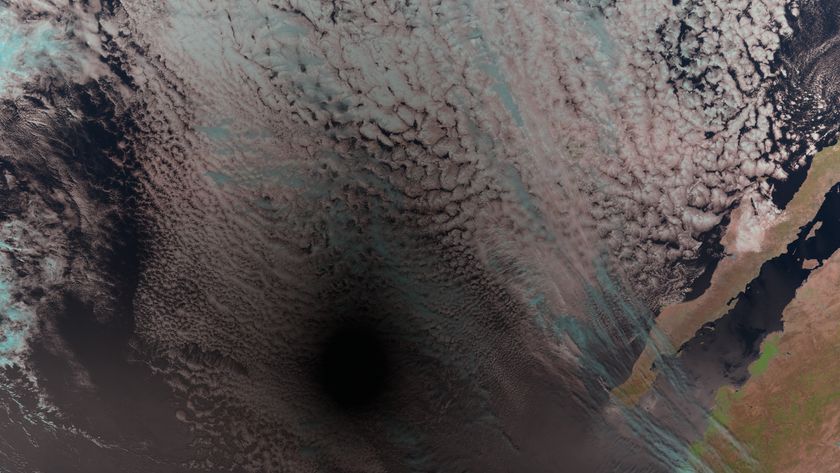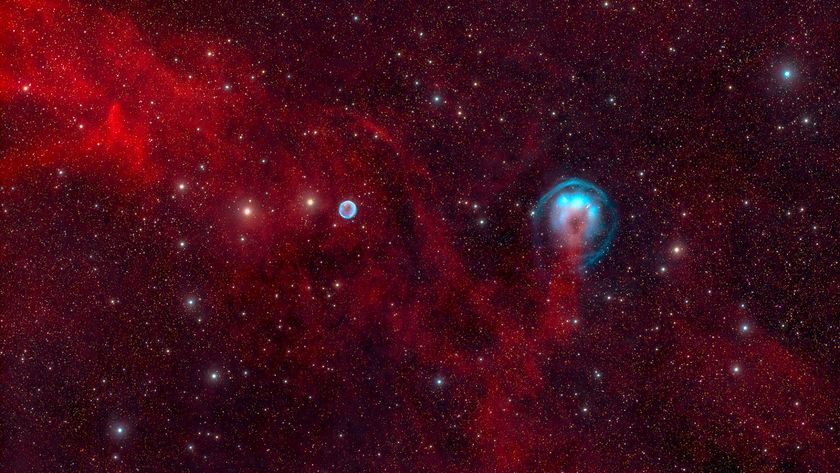Mars Was Recently Hit by a Meteorite 'Shotgun' Blast

On Earth, we are blessed with a thick protective atmosphere that prevents all but the biggest space rocks from wreaking havoc on the surface. Mars, however, doesn't have that luxury, highlighting yet another deadly hazard that will threaten any future human presence on the Red Planet.
Take this recent observation from NASA's Mars Reconnaissance Orbiter for example. From afar, a small cluster of dark blemishes on an otherwise pale landscape was the only indication of a meteorite impact, but on closer inspection, we realize it wasn't a single impact — it was in fact dozens all clustering around a small area in the Tharsis region of the Red Planet.
Initially detected by the orbiter's Mars Context Camera (CTX), scientists were able to determine that the impact must have occurred some time between 2008 and 2014. That detection led to a followup on Oct. 4, 2016, by the mission's High-Resolution Imaging Science Experiment (HiRISE) camera and the true nature of the impact became apparent. Two large impact craters accompanied by up to 30 smaller craters litter the scene, revealing that a meteoroid broke up in Mars' atmosphere, sending pieces of rock raining down onto the dusty surface.
RELATED: Mars Gets Hit By Cosmic Buckshot
The MRO regularly surveys for, studies and tracks long-term changes in fresh impact sites on Mars. These impacts not only tell us how frequent meteorite impacts are on Mars, they also provide a natural means to excavate material so we can see what minerals — that have not been exposed to the harsh weathering effects of being exposed on the Red Planet's surface — lie beneath. Also, by tracking long-term changes to the dusty material around the blast sites, we can learn something about surface winds and the movement of fine particles over time.
It is worth noting that the dark areas surrounding the impact sites isn't only ejecta that got blasted out of the crater. As the meteorites slammed into the ground, shocked air blew surface dust away, stripping the darker, fresh material bare around the crater. By analyzing the pattern of impact ejecta, planetary scientists are able to determine the direction from which the meteorites came from. In the above image, the meteoroid likely struck from the south (traveling from bottom to top).

Interesting science this may be, but it's also a warning. All indications are that we'll be sending a human expedition to Mars sometime around the 2030's — whether that be a NASA mission, via Elon Musk's SpaceX Interplanetary Transport System or an expedition led by another nation, like China — and if we play our cards right, we may establish a permanent human presence soon after. But Mars will be a harsh extraterrestrial home that will require a momentous effort to create sustainable habitats.
Get the Space.com Newsletter
Breaking space news, the latest updates on rocket launches, skywatching events and more!
RELATED: Mars Hit by Cosmic Buckshot, Again
As Mars' atmosphere is approximately 100 times thinner than Earth's, more meteors that streak through the atmosphere make it to the ground as meteorites. And in many cases, the atmosphere isn't quite thick enough to burn-up incoming space rocks, but thick enough to cause them to break up into many pieces. So rather than getting hit by a single projectile, depending on the size of the meteor, many bits of projectile can blanket bomb a large area.
For our future Mars colonists living in pressurized habitats on the surface — which, for the most part, would be vulnerable to falling rocks — it would be a grim reality of taking your chances of being hit by a single meteorite or by many pieces of meteorite, the cosmic equivalent of trying to dodge a bullet or buckshot from a shotgun. Neither is a good scenario, but you're more likely to get hit by the buckshot.
Originally published on Seeker.
Join our Space Forums to keep talking space on the latest missions, night sky and more! And if you have a news tip, correction or comment, let us know at: community@space.com.
Ian O'Neill is a media relations specialist at NASA's Jet Propulsion Laboratory (JPL) in Southern California. Prior to joining JPL, he served as editor for the Astronomical Society of the Pacific‘s Mercury magazine and Mercury Online and contributed articles to a number of other publications, including Space.com, Space.com, Live Science, HISTORY.com, Scientific American. Ian holds a Ph.D in solar physics and a master's degree in planetary and space physics.










